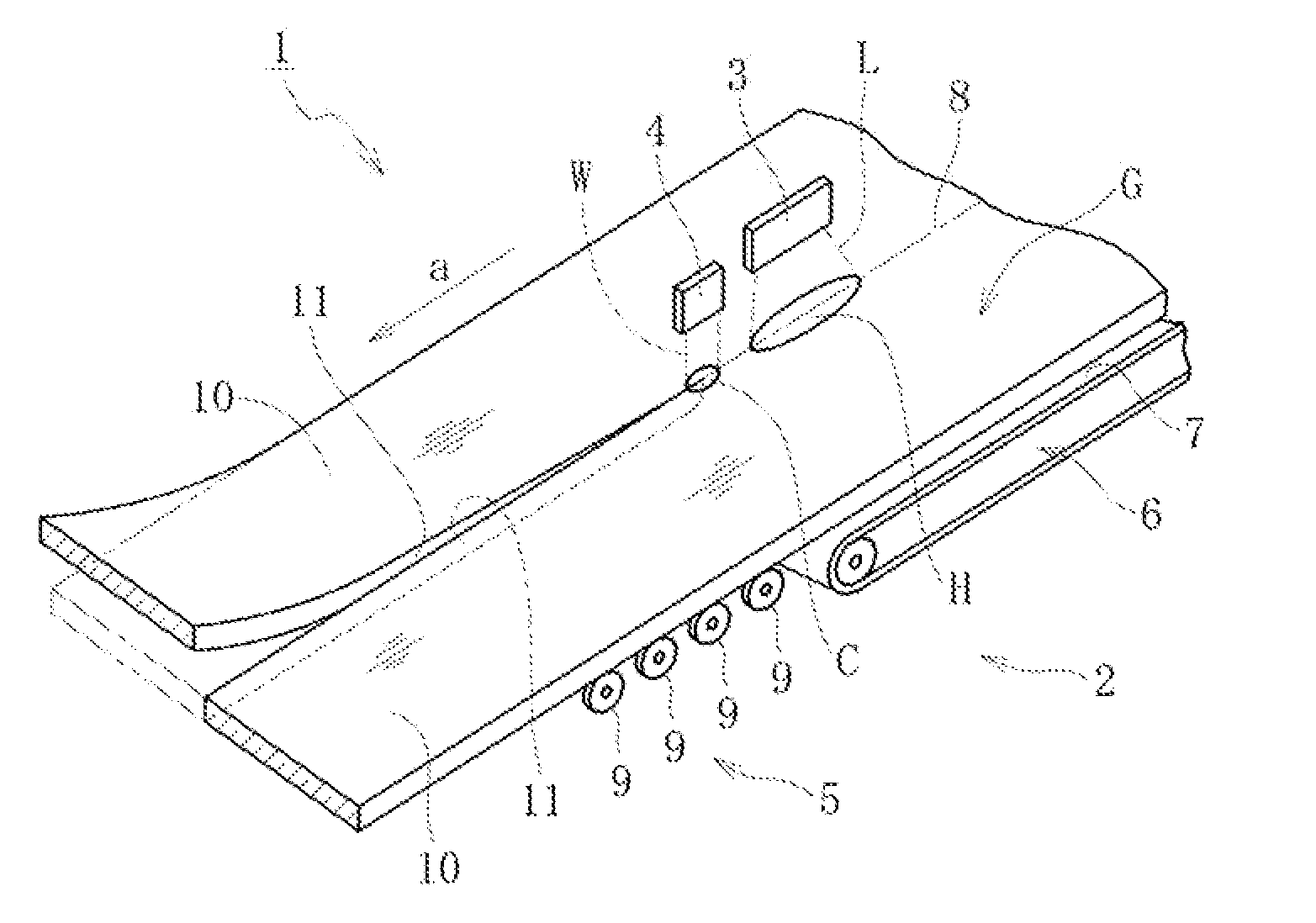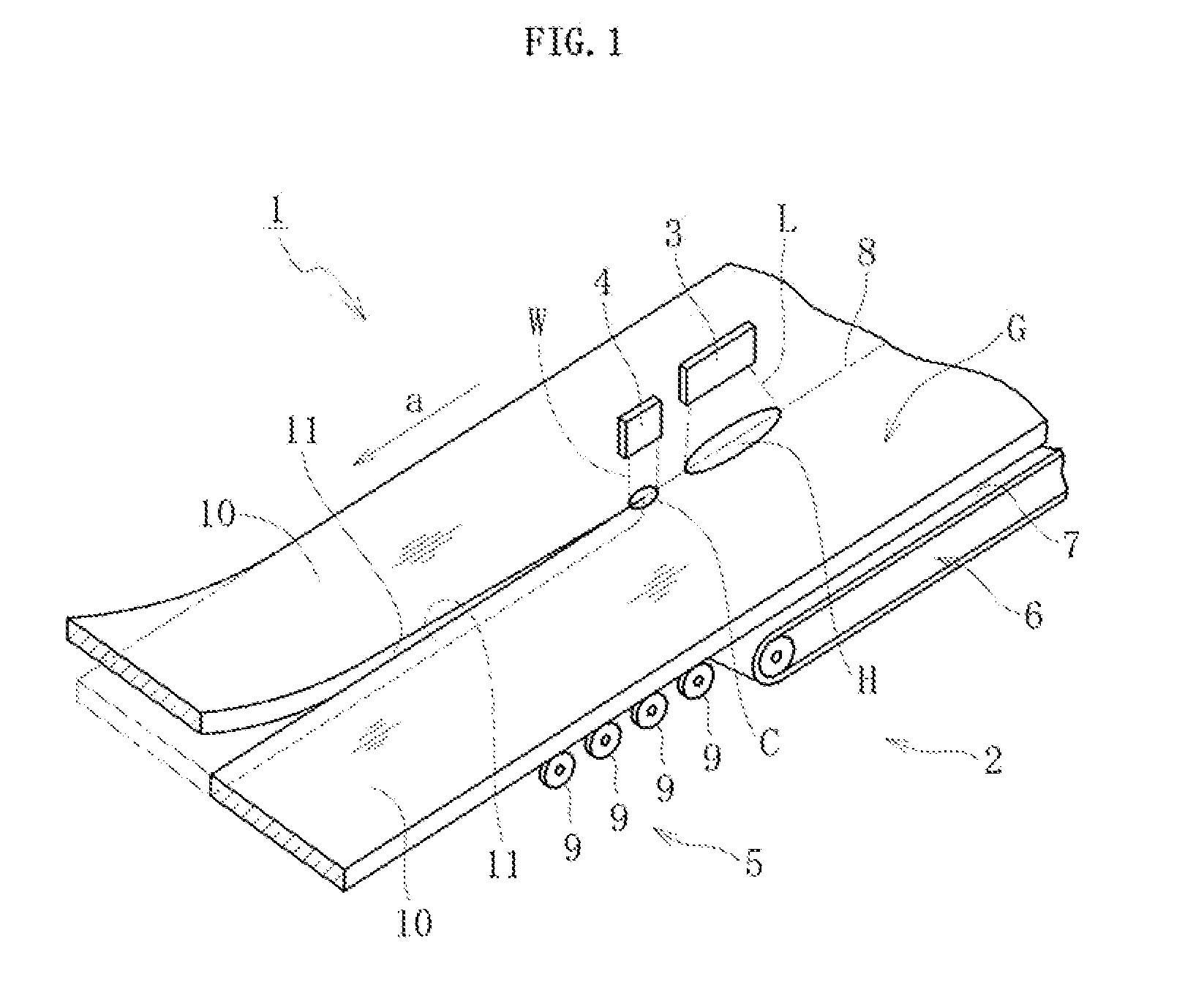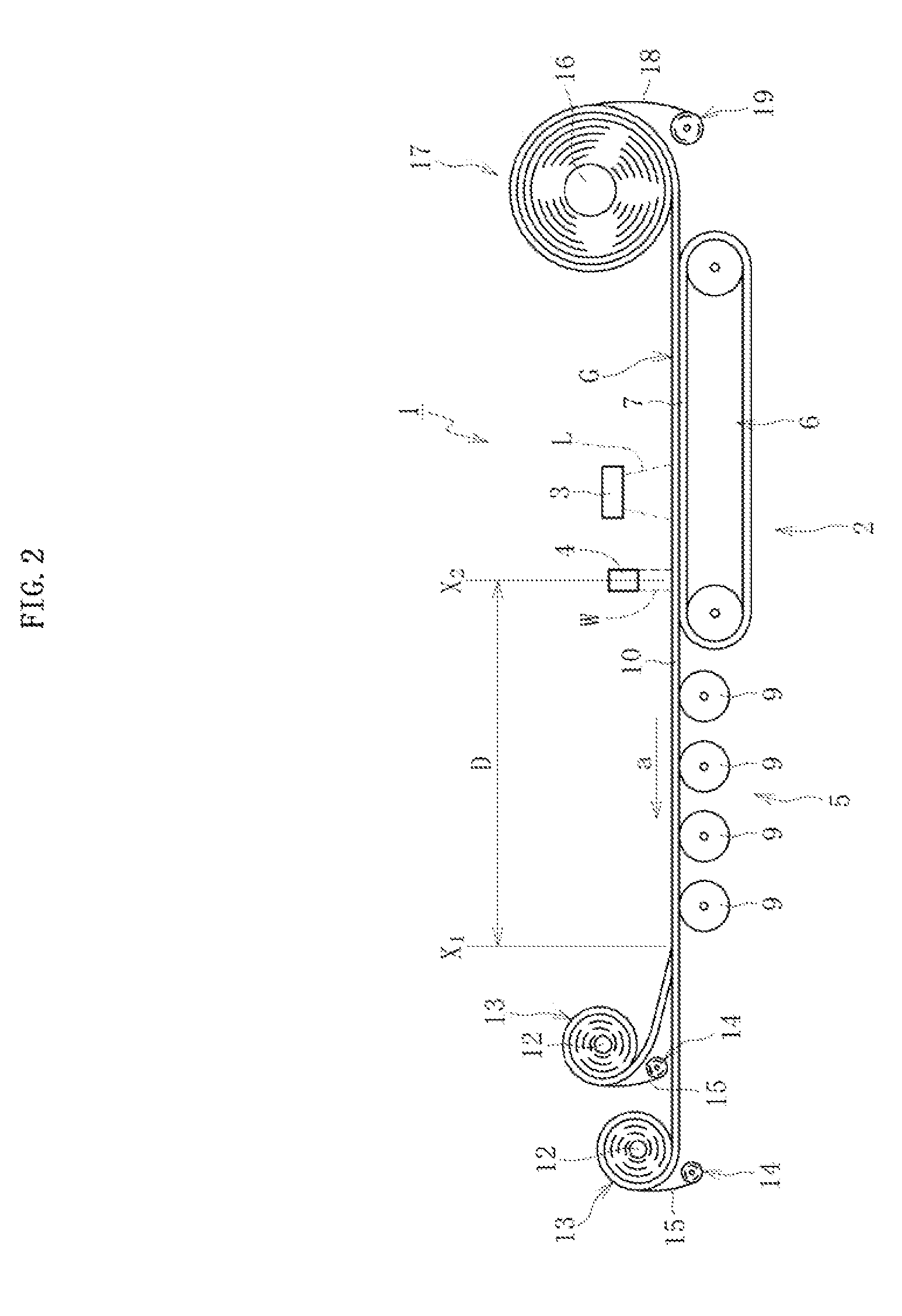Cleaving method for a glass film
a technology of cleaving method and glass film, which is applied in the field of cleaving and dividing, can solve the problems of marked deterioration in glass strength, difficult to employ such a method of cleaving glass substrate with bending stress, and significant difficulty in forming scribe lines with respect to glass substrates, so as to avoid interference between cleaved surfaces
- Summary
- Abstract
- Description
- Claims
- Application Information
AI Technical Summary
Benefits of technology
Problems solved by technology
Method used
Image
Examples
first embodiment
[0039]FIG. 1 is a schematic perspective view of a cleaving apparatus for carrying out a cleavingmethod for a glass film according to the present invention. The cleaving apparatus 1 mainly includes conveyance means 2 for conveying a glass film G toward a predetermined conveying direction “a”, locally heating means 3 for performing localized heating by applying a laser L to the glass film G placed in a lateral posture (for example, horizontal posture) on the conveyance means 2 from a front surface side of the glass film G, cooling means 4 for jetting cooling water W on a locally heated region H heated by the locally heating means 3 from the front surface side of the glass film G, and clearance forming means 5 described below.
[0040]Note that, in this embodiment, a carbon dioxide laser is used as the locally heating means 3, but alternatively, there may be used means capable of performing another type of localized heating such as heating with a heating wire or hot air blast. Further, th...
second embodiment
[0058]FIG. 9 is a schematic view illustrating a cleaving method for a glass film according to the present invention, in which the glass film G cleaved by the cleaving method is viewed in plan view. As illustrated in FIG. 9, in this embodiment, the clearance forming means 5 includes an entire-region heating device (not shown) for heating the entire widthwise region of the uncleaved glass film G with use of the thermal stress generated by localized heating and cooling, and an entire-region cooling device (not shown) for cooling the entire widthwise region of all the divided glass films 10 obtained by the cleaving. The heating and cooling devices generate a heated region 21 over the entire widthwise region of the uncleaved glass film G and a cooled region 22 over the entire widthwise region of all the cleaved divided glass films 10. Then, by setting a temperature difference between the heated region 21 and the cooled region 22 thus generated to a predetermined value or to fall within a...
PUM
| Property | Measurement | Unit |
|---|---|---|
| size | aaaaa | aaaaa |
| size | aaaaa | aaaaa |
| size | aaaaa | aaaaa |
Abstract
Description
Claims
Application Information
 Login to View More
Login to View More - R&D
- Intellectual Property
- Life Sciences
- Materials
- Tech Scout
- Unparalleled Data Quality
- Higher Quality Content
- 60% Fewer Hallucinations
Browse by: Latest US Patents, China's latest patents, Technical Efficacy Thesaurus, Application Domain, Technology Topic, Popular Technical Reports.
© 2025 PatSnap. All rights reserved.Legal|Privacy policy|Modern Slavery Act Transparency Statement|Sitemap|About US| Contact US: help@patsnap.com



